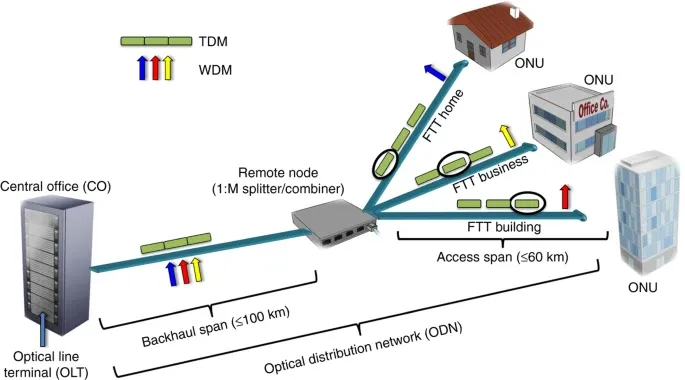The Future of Fiber Security System in High-Tech Security Solutions
The Ultimate Overview to Fiber Optic Safety Systems for Your Company
In a period where safety issues are paramount for companies, understanding the details of fiber optic innovation can be transformative. This guide details exactly how integrating fiber optic protection systems not only boosts information security yet likewise offers advantages like resistance to disturbance and real-time tracking capacities.
Comprehending Fiber Optic Technology

The core of a fiber optic cord is composed of a thin glass or plastic facility, surrounded by a cladding layer that shows light back right into the core. Single-mode fibers are developed for long-distance transmission, while multi-mode fibers are appropriate for shorter ranges, usually used within buildings.
Fiber optics are not just much faster but also extra safe than traditional wiring. Their fundamental resistance to electro-magnetic interference and the difficulty of taking advantage of the signal without discovery make them a recommended option for organizations prioritizing data integrity and security. As companies significantly rely upon protected and effective communication systems, recognizing fiber optic technology becomes necessary for informed decision-making.
Key Benefits of Fiber Optic Safety And Security
When considering safety alternatives for an organization, the benefits of fiber optic systems are specifically engaging. Fiber optic technology offers exceptional data transmission speeds and bandwidth capacity, making it ideal for dealing with high-resolution video clip feeds from monitoring video cameras. This capability makes certain that protection personnel obtain real-time information, enhancing general response times to possible safety and security threats.
In addition, fiber optic cables are inherently immune to electromagnetic interference, which can endanger the stability of typical copper-based systems. This resistance makes sure that the data sent stays secure and uninterrupted, giving a much more reliable security infrastructure. In addition, optical fiber are less susceptible to physical damage, as they are made from glass as opposed to steel, decreasing upkeep expenses and downtime.
An additional substantial benefit is the boosted scalability of fiber optic systems. As business requirements advance, fiber networks can be conveniently expanded to suit additional safety gadgets without considerable overhauls to the existing framework. Fiber optic systems offer improved cybersecurity functions, consisting of file encryption capacities that protect sensitive data from unauthorized gain access to. Jointly, these advantages make fiber optic security systems a durable selection for businesses seeking to improve their safety actions.
Installation Process and Factors To Consider
Thinking about the intricacies included, the setup process of fiber optic safety and security systems calls for mindful preparation and implementation. The preliminary step includes a detailed site assessment to identify ideal locations for cabling and equipment. This assessment must consider ecological elements, existing infrastructure, and potential susceptabilities.

Additionally, the installation needs to abide with neighborhood building codes and market criteria. This may consist of collaborating with various stakeholders such as building managers, IT teams, and safety workers to make sure seamless assimilation with existing systems.
Post-installation, strenuous screening is needed to confirm system performance and recognize any issues that might develop. By prioritizing these factors to consider throughout the installment procedure, services can guarantee a durable and efficient fiber optic safety system that satisfies their specific protection requirements.
Most Current Technologies in Fiber Optic Safety And Security
Current improvements in fiber optic modern technology have actually substantially enhanced the capacities of safety and security systems for organizations. One of the most remarkable developments is the assimilation of fiber optic sensors that can discover vibrations and breaches along the perimeter of a center. get more These sensing units offer real-time surveillance, enabling fast feedback to potential breaches.
In addition, the development of distributed fiber optic picking up technology enables the continual monitoring of big locations with a solitary fiber cable. This technique not just lowers installation expenses however additionally improves the reliability of monitoring systems by eliminating the requirement for several, different sensing units.
Furthermore, developments in multiplexing methods have actually enabled companies to transfer huge quantities of information over fiber optic networks, boosting the capacities of video clip surveillance systems. High-definition video feeds can now be sent over fars away without loss of high quality, making sure that safety employees have access to clear and actionable info.
Finally, the use of fabricated knowledge (AI) along with fiber optic systems is changing hazard discovery. AI formulas can analyze information from fiber optic networks to recognize uncommon patterns or habits, permitting for aggressive protection actions. These technologies jointly stand for a substantial leap ahead in fiber optic security modern technology.
Choosing the Right System for Your Organization
Selecting the appropriate fiber optic safety system for your company is crucial for guaranteeing ideal security and tranquility of mind. To make an educated choice, examine your details safety requirements, considering variables such as the size of your properties, see this page the nature of your operations, and potential susceptabilities.
Begin by reviewing the level of protection needed; for instance, risky environments may demand sophisticated systems with integrated monitoring and intrusion discovery capacities. Next, take into consideration scalability; as your service grows, your protection system need to can increasing to fit increased needs without substantial overhauls.
Additionally, check out the integrity and performance of home numerous systems. Seek companies with well-known credibilities and client reviews that vouch for their solution top quality. It's additionally advisable to make inquiries about the innovation's compatibility with existing facilities, making sure a smooth assimilation process.
Conclusion
In conclusion, fiber optic protection systems provide a robust solution for boosting service safety and security infrastructures. The most current technologies even more bolster the performance of these systems, guaranteeing that businesses remain secure and adaptable in an ever-evolving threat landscape.